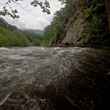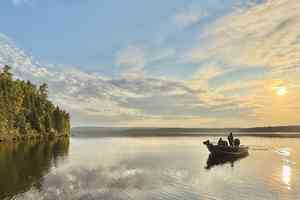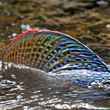On Friday, the EPA released an updated version of its Bristol Bay watershed assessment and initiated a public comment period extending until May 31, 2013. The purpose of the assessment is to evaluate the potential impacts of hard rock mining, such as that proposed by foreign mining companies Northern Dynasty and Anglo American, to the environment and economy of the Bristol Bay region of Alaska. In order to assure that it is "using the best available science and that [it has] heard and considered all comments", the EPA is giving anyone with an opinion to express an opportunity to make their voice heard.
The EPA's assessment notes that even without any failures in the operational safety measures in place at the proposed mines, the construction of these mines and their related facilities will lead to extensive habitat loss. The prospects of a failure at any of the on or off site facilities that will store and transport mining products or the more than 10 billion pounds of expected toxic mining waste are much more grim. The assessment not only addresses the sensitivity of the aquatic and terrestrial habitat in which the Pebble Mine and other operations are proposed, but notes that opportunities for mitigation and remediation of any spills, leaks or other failures would be virtually non-existent.
The report, in detail, assesses the potential impacts of the aforementioned failures. In the case of the large dams that will hold back massive flooded lakes or pits of acidic mine waste, called tailings storage facilities, a failure could be catastrophic, leading to the destruction of over 30 salmon streams and severe habitat degradation of others. In a region that characteristically receives severe weather and is seismically active, these likelihood of such a failure increases. When additional consideration is given to the fact that these waste pits and the dams that secure them will persist after mine closure -- for hundreds or thousands of years -- the occurrence of a failure is seen by many Pebble Mine detractors to be an inevitability.
The Bristol Bay watershed is responsible for the generation of almost half the world's sockeye salmon (almost 40 million fish annually), the majority of which is harvested sustainably each year for human consumption. These salmon and the 35 other species that occupy the streams and rivers of the region sustain countless of other flora and fauna through their annual migration, delivering millions of pounds of marine-derived protein into the Alaskan interior. They also support over 14,000 Alaskan jobs and numerous native cultures. Bristol Bay is one of the world's last true wildernesses and greatest natural resources.
Detractors of the Pebble Mine characterize the prevention of degradation and/or destruction of this pristine habitat as one of the greatest conservation tasks facing this generation and urge that now is the time to speak out. If you'd like to make your voice heard, you can do so via the EPA's public comment period, by visiting: http://www2.epa.gov/bristolbay/current-public-involvement.






























Comments
ginkthefly replied on Permalink
I'm skeptical that people will do their small part to help, here.
Please, everyone, take the 5 minutes to send a comment to the EPA.
Pages